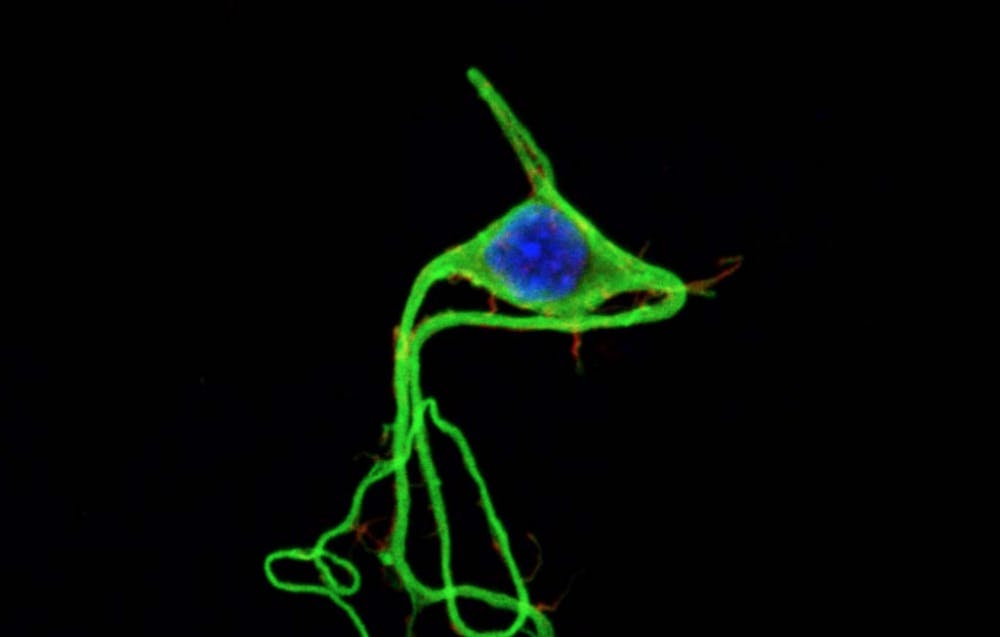Researchers at Stanford University have recently used computerized synapses to recreate brain networks.
A synapse is a junction between two cells of the nervous system, called neurons, that allows signals to be passed from one neuron to another. Whenever humans learn something new, electrical signals are present between their neurons. Over time as new information is learned, new synapses may be formed.
According to Alberto Salleo, associate professor of materials science and engineering at Stanford University and head researcher of this project, his team has created an artificial computerized synapse that can be used to accurately model the brain’s systems.
“It works like a real synapse, but it’s an organic electronic device that can be engineered,” Salleo said in a press release. “It’s an entirely new family of devices because this type of architecture has not been shown before. For many key metrics, it also performs better than anything that’s been done before with inorganics.”
Salleo published his work with this new artificial synapse in the Feb. 20 issue of Nature Materials. The paper notes how Salleo and his team have created a synapse that is far more efficient than old models, which rely on traditional computing to separately process information and store it into memory.
The artificial synapse was fully made of inexpensive organic material and is the first of its kind.
Using hydrogen and carbon material compatible with the brain’s chemistry, researchers grew cells for artificial pumps and neurotransmitters. The device itself is soft and flexible and resembles its biological counterpart morphologically.
The new artificial synapse is non-volatile due to its compatible composition; It is battery-based and made up of two separate films and three terminals.
One of the terminals controls the flow of electricity between the other two. The terminals are connected by electrolytes generated from salt water.
Researchers are able to program the synapse by charging it up using the electrolytes. In this way the synapse between the two terminals is much like a neural path that is reinforced through learning.
After the artificial synapse is trained, it will be able to predict within one percent of uncertainty, a remarkably small margin of error, what voltage is required to get the synapse to excite to a specific electrical state.
“Deep learning algorithms are very powerful, but they rely on processors to calculate and simulate the electrical states and store them somewhere else, which is inefficient in terms of energy and time,” Yoeri van de Burgt, another lead author of the study and a former postdoctoral scholar in the Salleo lab, said in a press release. “Instead of simulating a neural network, our work is trying to make a neural network.”
So far only one synapse has been produced, although the research team hopes to be able to replicate their design efficiently. By the end of their project, over 15,000 measurements from experiments on synapses were used to create a network of increased accuracy.
Researchers then tested how well the network was able recognize the handwritten digits 0 through 9; The accuracy of this recognition proved to be between 93 and 97 percent.
A. Alec Talin, a member of the technical staff at Sandia National Laboratories in Livermore, Calif., discussed their findings.
“More and more, the kinds of tasks that we expect our computing devices to do require computing that mimics the brain because using traditional computing to perform these tasks is becoming really power hungry,” he said. “We’ve demonstrated a device that’s ideal for running these type of algorithms and that consumes a lot less power.”
The new artificial synapse could potentially become part of a fully computerized model of the brain, although experts in the field believe that it may still be some time before someone is able to combine all the individual components of the complex nervous system together.
In the future, Salleo and his team hope to use this device to improve brain machine learning and technologies. The team continues to work towards a higher recognition accuracy for their computerized synapse model as there is still room for improvement.





